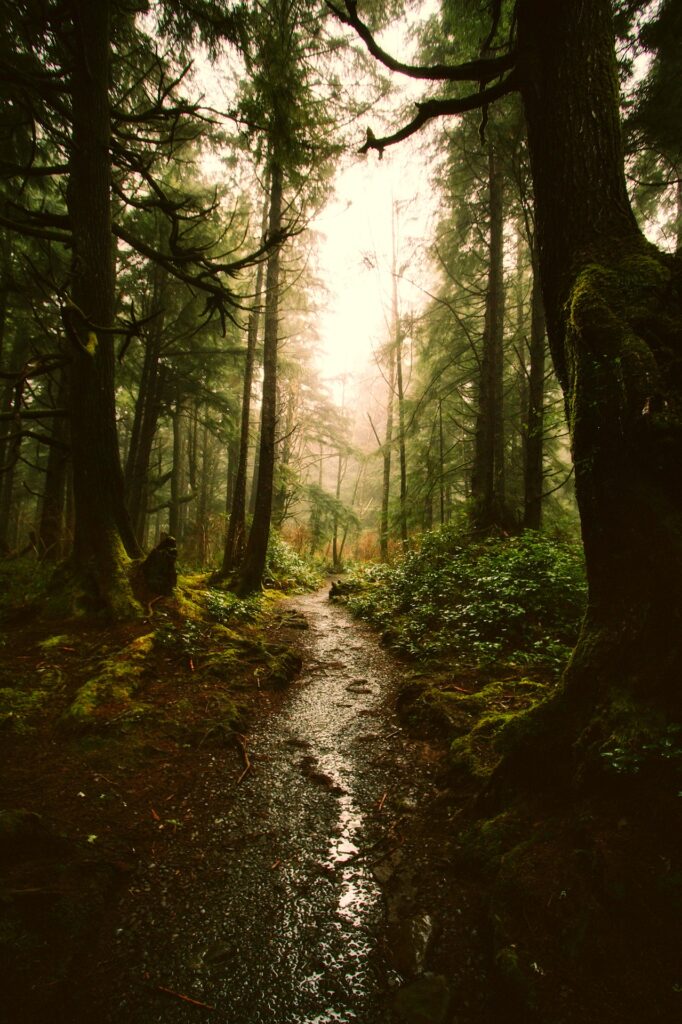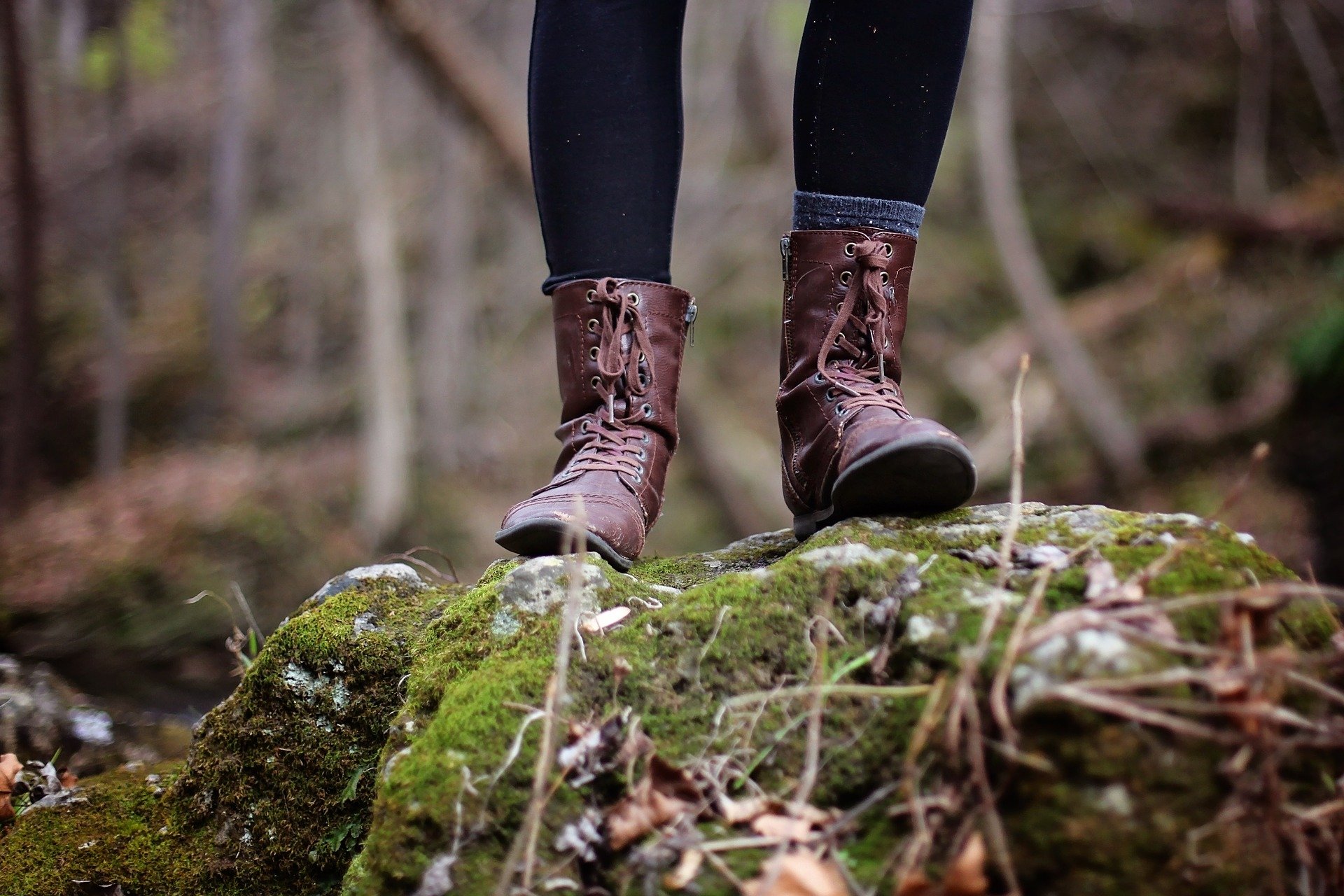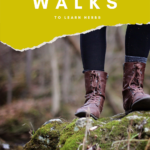Links contained in this post and elsewhere on my website may include affiliate links. When you make a purchase through these links, I earn a commission at no additional cost to you. I only link to products and services that I love - and that I think you will love, too!
Plants are at the heart of what we do as herbalists, so it’s important to gain a sense of connection to your local ecosystem. No matter where you live, or what the time of year, chances are there are many native plants with a history of herbal uses waiting to be discovered. There may also be “naturalized” plants- plants that are native to another place but have escaped gardens and established themselves in your area. Here are some tips for taking plant walks and enjoying your time in nature!
It’s best to establish a local beat to walk at least once a month. That way, you can get a feel for how the plants change in each season. If you don’t have a garden, this can give you insight into the natural rhythm of the plant world- many people are surprised to discover that nature is not like a supermarket. Plants are available each year for a limited time only.
Before you go on a plant walk
Take some time to look through a good field guide and familiarize yourself with plants you are likely to encounter. We cover botany basics in another article but learning how to “key out” a plant can make it easier to look up in the field guide. Still, you’d be surprised by how helpful making a regular date with your field guide over tea or coffee can be!
Consider the time of year
Each season has its own appeal and focus. Spring and early summer are the perfect time to see wild flowers. In summer, you can focus on learning leaf shapes and berries, while fall is a good time to study plants that bear fruit and nuts. Winter is my favorite time to study trees: by focusing on the bark, the shapes of the branches, and the dormant buds you will become even more aware of the nuances of each tree that are lost when you focus solely on the leaf shapes over the summer.
Regardless of where you go or the length of your walk, it’s important to dress for the weather. So,
What to wear on a plant walk
- A Hat- A warm one if it’s cold, a ball cap or nice shady wide brim if it’s hot and sunny
- Sunglasses- can be useful if it’s bright out, regardless of the season.
- Long Pants- Necessity even in summer (because of poison oak, brambles, etc), unless your route is paved. Stick with light colors in summer, not blue jeans. Mosquitoes like the color blue.
- Layers- Always err on the side of dressing too warmly in the spring and fall with layers you can peel off if you start to feel hot. Even in summer, a lightweight jacket can be useful if a sudden rainstorm comes up.
Staying safe on your plant walks
Here are a few useful tips on staying safe while enjoying your plant walks, and a reminder of good walker’s etiquette:
- Take a friend or two. There is safety in numbers.
- Be realistic about your abilities. Stick to short trails and local parks at first.
- Gradually increase your time and distance over your walks if desired to allow your body time to adapt.
- Don’t go onto private property if you haven’t been invited. Only visit county parks, state parks, or other public spaces on your walks.
- Let someone know where you’re going and when you’ll be back. This means someone who isn’t walking with you, and let them know your plans. Let them know if they haven’t heard back from you by a certain time they should let park rangers or the local sherrif know.
Being polite on the trail
If you decide to venture on a hiking trail at a state park instead of visiting a nearby city or county park, keep in mind that hikers have their own etiquette to follow. Most of it is common sense.
- Lock your car and keep all of your personal items out of sight in the trunk.
- Don’t take anything but pictures. Many hiking trails go through protected areas. Harvesting plants or disturbing wildlife is illegal.
- Don’t leave anything but footprints. I make a habit of picking up other people’s trash when I hike. Its a nice way to give back and show appreciation. Also, be mindful of wrappers and other bits of detritus that might escape ypur pockets! Take a reusable water bottle or canteen.
- It’s important to be able to hear what’s going on around you. Don’t listen to airpods, earbuds, or headphones.
- Smile and greet fellow hikers. Allow them to pass by stepping off the trail when they are going faster than you or coming in the opposite direction. If someone is obviously distracted, let them know you are approaching behind by saying “On your left” or “On your right.”
- If someone makes you feel uncomfortable, trust your instincts. Leave. If someone seems intoxicated or out of touch with reality, let the rangers know when you get back to the visitor’s center.
- Ideally, bikers yield to hikers and both yield to horseback riders, but that’s not always the case. Always be aware of mountain bikers on mixed-use trails.
What to pack on a plant walk
If you’re going on a short jaunt around the block, you probably won’t need to carry much with you. For longer plant walks, you may find some of these items useful:
- Water
- A Snack
- Notebook and Pen
- Camera
- Field Guide
- Bug Spray
- Sunscreen
- Small First Aid Kit
- (And of course some sort of back pack to carry it all in)
Best places to take walks to learn herbs
There should be many places you can choose from when you decide on your perfect route, no matter where you live. Find someplace you won’t mind exploring once a month so that you can see how plants change over the course of the year. Most likely you will want to find a walking path or trail nearby, with easy access. By easy access, I mean accessible in all (or at least most ) weather.
Your chosen route should be something you won’t mind hiking 12 times. Something really steep and grueling is probably out. As an example, I love the Disney Trail in Dalton, Georgia. It’s named after a civil war soldier, not the company if you’re curious. It has some great perks. Trees along the path are marked with signs to identify their type, there are lots of great mushrooms and lichens to examine, and dramatic views even on misty days. But it’s also one of the steepest, most demanding trails in the state. So unless you are extremely fit and experienced, it’s a great example of what not to choose.
(Although, I will admit. Being able to yell “PIGNUTS!!!!!” thanks to one of the trail-side signs while throwing them at my hiking partner was immensely satisfying. Also, being made to promise to not throw pignuts on the way down made for a hilarious, although not exactly repeatable, conversation.)
Better ideas for plant walks close to home
- The local park around the corner
- Nearby state park with friendly terrain
- A stroll through your neighborhood
- Investigating your own backyard (if you are lucky enough to have one)
If you’re interested in state parks, get a guide to hiking trails in your state and pick one that’s close by and matches your level of physical fitness. Again, not a Disney.
If you live in Georgia, like me, you can even check out a Georgia State Park Pass at your local library. The visitor center at any Georgia state park is a great place to ask about difficulty levels and other know-before-you-go info.
I live in the NW part of the state, so I can tell you from experience that Fort Mountain is great any time of the year. There are several trails with plenty of plants to spy, and a good mix of trails for every ability. If you go at the right time of year, you may be able to see amazing plants like Sweet Shrub (Calycanthus floridus).
Without a pass, National Recreation Areas and State Parks will typically have a parking fee of $3 to $5. So be sure to bring along a little cash. Annual passes often make sense if you really love hiking and expect to go many different places in a year. (I know this applies to Georgia, but I’m not sure about other states. Mileage may vary.)
Enjoying your walk
Rather than examine each and every plant that you come across, just enjoy the walk and take notes on whatever catches your eye. Snap a closeup with phone or camera and look up the plants later. If you choose to visit a location further afield than your neighborhood every month, make a day of it! Enjoy the chance to unwind and explore. Take a picnic and find plenty of nice spots to sit and soak up the scenery.
Becoming a better herbalist and developing your skills is a process. Enjoy the journey with friends and plants alike!






